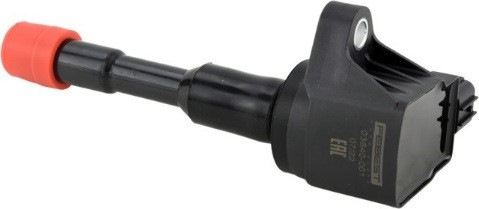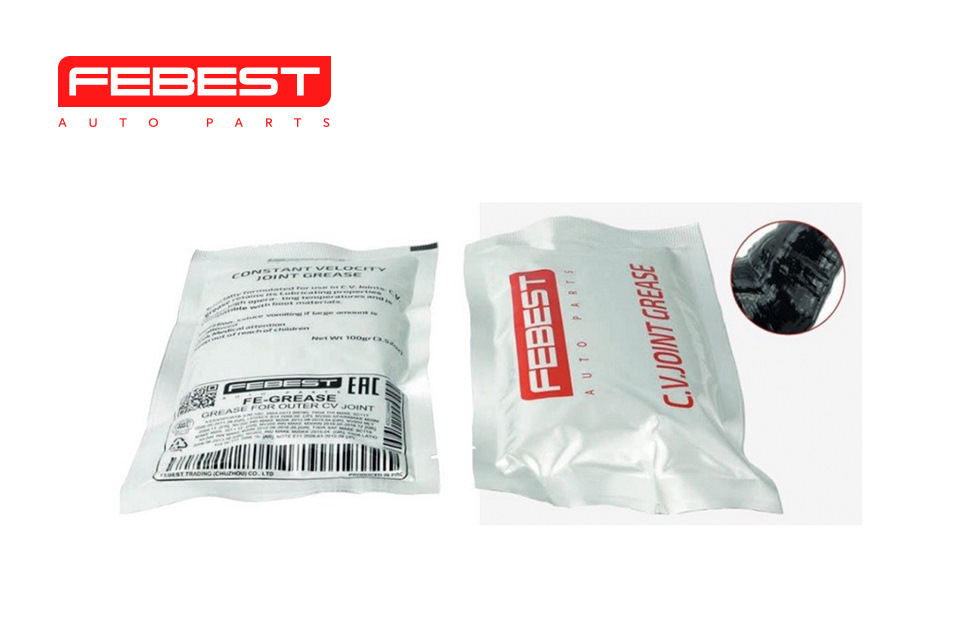As you know, “if you don’t grease, you won’t go” …Which we can understand in the most direct sense. Indeed, numerous rubbing parts of car mechanisms need constant lubrication. Proper lubrication provides an increase in the resource of the assembly, its protection from the effects of water, abrasives and other external factors. Today, we are discussing what lubricants are necessary when installing and maintaining various FEBEST components.
Brakes: guides and pistons
Lubricants are provided in an assortment of FEBEST repair kits designed for servicing and repairing brake mechanisms. Red grease is in brake piston repair kits. The correct application of it is under the piston boot to protects all mating parts from wear. The grease is resistant to water and will protect the piston for some time even with a torn anther, giving the owner the opportunity to identify the malfunction and fix it in time. Applying grease under the anther of the caliper piston is mandatory.

Caliper guides are another part of the brake mechanism that definitely needs lubrication. By ensuring the correct movement and position of the floating bracket, the guides are extremely sensitive to wear. The result of running without lubrication can be a complete jamming of the caliper. A particular guide grease is used every time floating caliper brakes are overhauled. FEBEST repair kits include such lubricant without fail. FEBEST Guide Lubricant ensures smooth movement of the caliper. We pick the right formulation so as not to harm the rubber of the anthers.
SHRUS grease
The use of special CV joint grease guarantees long life and low component wear. The design features of the drive dictate the use of different types of lubricant for external and internal CV joints. The reason is simple: the outer joint most often has ball rolling bodies, and the inner tripod has needle bearings. They work and are loaded differently, which means they need different lubrication. And the hot proximity to the engine and gearbox requires greater high-temperature resistance from lubricants for internal grenades.

FEBEST FE-GREASE (for external) and FE-GREASEIN (for internal) lubricants are for various types of CV joints. They have different recipes and different characteristics. Both greases have a long service life and high resistance to washout. The material is in a soft stick pack containing 100 grams of lubricant – for single use.
Serviced Crosses
The crosspieces of the cardan shaft in some cases, provided by the vehicle manufacturer, are serviced. Service is reduced to the periodic replacement of grease inside the needle bearings of the spider by forcing fresh material through the grease fitting. Some of the FEBEST crosspiece models are made with the possibility of filling with new grease. For these cases, it is necessary to use special greases based on lithium soap, which are available in the assortment of all major manufacturers, both foreign and Russian.

Spark plugs and glow plugs: to lubricate or not?
Spark plugs heat up during operation. Most of the heat travels to to the cylinder head. Some of the heat travels to the ceramic insulator allowing it to do its job. Due to the heating of the spark plug insulator, it often sticks tightly to the spark plug tip or the tip of an individual ignition coil. When dismantling, the tip is fragile and can break.

To prevent this from happening, a special dielectric lubricant is used for candle tips. This lubricant protects the contact area from oxidation. It facilitates dismantling and protects against breakdown of high voltage current to the candle body. A special lubricant is advisable when replacing individual FEBEST ignition coils. The lubricant’s application is in a thin layer to the inner surface of the tip.
As for the lubrication of the thread on spark plugs and glow plugs, this task requires caution. The fact is that the lubricant applied to the thread changes the tightening torque of the candle and reduces the effort required to tighten it correctly. A glow plug or spark plug with lubricated threads can be easily overtightened, which damages the housing leading to malfunction. Some spark plug manufacturers do not recommend applying any lubricant to the threaded part at all.
Where is it already lubed?
There is no need to lubricate all types of FEBEST ball joints. Steering tips, ball joints, stabilizer links, steering rods and FEBEST floating silent blocks are factory-filled with grease designed for the entire life of the hinge.

The same is true for maintenance-free rolling bearings. FEBEST crosses without grease nipples, all closed-type transmission bearings. Which are already have the correct amount of grease. For each of the applications, a specific type of lubricant is necessary. Which most fully meets the operating conditions in a particular unit. By disassembling the part yourself and replacing the factory lubricant with a “universal” lubricant without a clear understanding of the specifics of the mechanism, you risk significantly reducing the resource of the assembly.
Using the right lubricant is an important condition for the long and trouble-free operation of any car mechanism. When choosing FEBEST spare parts and repair kits, do not forget to use the lubricant from the delivery kit. And you can quickly and accurately find the right part in our electronic catalog!

Leave a Reply